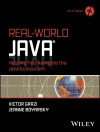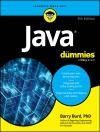Sharpen your knowledge of C#
C# know-how is a must if you want to be a professional Microsoft developer. It’s also good to know a little C# if you’re building tools for the web, mobile apps, or other development tasks. C# 7.0 All-in-One For Dummies offers a deep dive into C# for coders still learning the nuances of the valuable programming language. Pop it open to get an intro into coding with C#, how to design secure apps and databases, and even pointers on building web and mobile apps with C#.
C# remains one of the most in-demand programming language skills. The language regularly ranks in the top five among ‘most in-demand’ languages, typically along with Java/Java Script, C++, and Python. A December 2016 ZDNet article noted ‘If your employer is a Microsoft developer, you better know C#.’ Lucky for you, this approachable, all-in-one guide is here to help you do just that–without ever breaking a sweat!
Includes coverage of the latest changes to C#
* Shows you exactly what the language can (and can’t) do
* Presents familiar tasks that you can accomplish with C#
* Provides insight into developing applications that provide protection against hackers
If you have a basic understanding of coding and need to learn C#–or need a reference on the language in order to launch or further your career–look no further.
Table des matières
Introduction. 1
Book 1: The Basics of C# Programming. 5
CHAPTER 1: Creating Your First C# Console Application. 7
CHAPTER 2: Living with Variability — Declaring Value-Type Variables. 23
CHAPTER 3: Pulling Strings. 45
CHAPTER 4: Smooth Operators. 75
CHAPTER 5: Getting into the Program Flow. 89
CHAPTER 6: Lining Up Your Ducks with Collections. 119
CHAPTER 7: Stepping through Collections. 149
CHAPTER 8: Buying Generic. 177
CHAPTER 9: Some Exceptional Exceptions. 201
CHAPTER 10: Creating Lists of Items with Enumerations . 223
Book 2: Object-Oriented C# Programming 233
CHAPTER 1: Object-Oriented Programming — What’s It All About? 235
CHAPTER 2: Showing Some Class. 243
CHAPTER 3: We Have Our Methods. 257
CHAPTER 4: Let Me Say This about this. 283
CHAPTER 5: Holding a Class Responsible. 301
CHAPTER 6: Inheritance: Is That All I Get? 329
CHAPTER 7: Poly-what-ism? 357
CHAPTER 8: Interfacing with the Interface. 385
CHAPTER 9: Delegating Those Important Events. 411
CHAPTER 10: Can I Use Your Namespace in the Library? 435
CHAPTER 11: Improving Productivity with Named and Optional Parameters. 459
CHAPTER 12: Interacting with Structures. 469
Book 3: Designing for C#. 483
CHAPTER 1: Writing Secure Code. 485
CHAPTER 2: Accessing Data. 499
CHAPTER 3: Fishing the File Stream. 521
CHAPTER 4: Accessing the Internet. 543
CHAPTER 5: Creating Images. 559
CHAPTER 6: Programming Dynamically! 571
Book 4: A Tour of Visual Studio. 583
CHAPTER 1: Getting Started with Visual Studio. 585
CHAPTER 2: Using the Interface. 597
CHAPTER 3: Customizing Visual Studio. 623
Book 5: Windows Development with WPF. 641
CHAPTER 1: Introducing WPF. 643
CHAPTER 2: Understanding the Basics of WPF. 653
CHAPTER 3: Data Binding in WPF. 681
CHAPTER 4: Practical WPF. 705
Book 6: Web Development with ASP.NET. 721
CHAPTER 1: Looking at How ASP.NET Works with C#. 723
CHAPTER 2: Building Web Applications. 735
CHAPTER 3: Controlling Your Development Experience. 753
CHAPTER 4: Leveraging the .NET Framework. 783
Index 801
A propos de l’auteur
John Paul Mueller is a writer on programming topics like AWS, Python, Java, HTML, CSS, and Java Script. William Sempf is a programmer and .NET evangelist. Chuck Sphar was a full-time senior technical writer for the Visual C++ product group at Microsoft.












